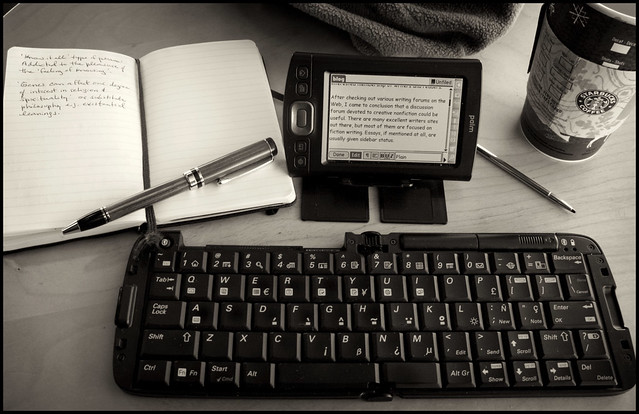Education FOCUS: Example OF AN EXPOSITION
Education FOCUS: Example OF AN essayfreelancewriters.com/thesis-writer/ EXPOSITION
Structure: 1. Introduction - a short paragraph stating both points of view and a thesis statement. These reasons ought to be supported by proof and examples. 3. Points Against - one paragraph giving reasons why the future is not shiny. These causes needs to be supported by evidence and examples. 4. Conclusion - a short paragraph stating your point of view (thesis) based on the reasons and proof you've gotten given. A perspective and thesis assertion are required for both argumentative and discursive essays. We could use the analogy of a courtroom case. Consider the thesis statement as the defence and the antithesis because the prosecution. There isn't any level in holding a trial without a verdict. When it comes to spoken text, consider your discursive essay as a debate through which each sides are introduced. With no closing adjudication, the controversy has little goal. Remember the purpose of an exposition (argumentative or discursive) is to influence, If the author has no clear viewpoint, then it is inconceivable to influence the reader. The longer term is a thriller to everyone.
 Some individuals would argue that the longer term is shiny because modern expertise will quickly be in a position to solve most problems in our society. Other folks suppose that modern expertise will deliver in regards to the destruction of the world. If we consider the recent negative environmental and social developments on the planet at this time it's unattainable to be optimistic about the future. It may be argued that trendy know-how has solved most of the world’s problems, and may continue to take action in the future. [ Scientists are now able to cure or prevent many of the diseases that previously affected hundreds of thousands of people. [ As well as this there has been an explosion in the area of information know-how and communication. [ Along with the advances made in communication, transport has also been improved all around the world. Even in creating international locations, many people now personal private transport or are in a position to travel shortly and easily using public transport.
Some individuals would argue that the longer term is shiny because modern expertise will quickly be in a position to solve most problems in our society. Other folks suppose that modern expertise will deliver in regards to the destruction of the world. If we consider the recent negative environmental and social developments on the planet at this time it's unattainable to be optimistic about the future. It may be argued that trendy know-how has solved most of the world’s problems, and may continue to take action in the future. [ Scientists are now able to cure or prevent many of the diseases that previously affected hundreds of thousands of people. [ As well as this there has been an explosion in the area of information know-how and communication. [ Along with the advances made in communication, transport has also been improved all around the world. Even in creating international locations, many people now personal private transport or are in a position to travel shortly and easily using public transport.
Therefore, it's generally claimed that know-how will provide mankind with the universal panacea of the future. [ Pollution is one results of elevated expertise and industrialization. The effects of this can be seen within the destruction of the ozone layer in addition to world warming. [Improvements in expertise have additionally increased the effectiveness of weapons, especially weapons of mass destruction. [As a direct results of fashionable technology, certainly in the future new diseases will appear. [Although transport has improved, it brings with it the danger of air pollution and visitors congestion. [Overpopulation and starvation will improve in the future because natural assets are limited and undoubtedly the amount of fertile land is reducing steadily. In conclusion, it is obvious that for most people on this planet the long run is not bright because mankind is destroying the environment by way of unsustainable development. Modern expertise can resolve some issues but without careful planning the longer term looks bleak.

In a means, the skyscraper, as a symbol, is a synecdoche for the people who work within the constructing; it's wounded because its human occupants are wounded. The narrator also gives verbal snapshots of individuals, helping to humanize the gang whereas creating the impression that the reader him- or herself witnesses the plight of those people. Townsend’s use of a reliable first-individual narrator also helps him to create a way of immediacy for his reader while imparting credibility to his position as the narrative’s narrator. Townsend’s use of a reliable first-individual narrator also helps him to create a way of immediacy for his reader while imparting credibility to his role because the narrative’s narrator. He admits that he had “always wondered what” he might “do in a life-or-dying scenario,” hoping that he would respond in an altruistic, even heroic, manner. However, he disappoints himself. When a possibility arises to help a fallen, elderly gentleman who is fleeing from the toxic cloud that resulted from the explosion of one of the buildings, he hesitates. When he turns back to help, “two youthful guys” have already come to the man’s support.
In "The primary Hours," Tim Townsend describes the horrific aftermath of the 2001 terrorist attacks upon the World Trade Center. These assaults, which occurred on September 11, have had long-term, devastating social and personal effects upon the victims and different Americans. Townsend’s essay has three sections. For example, the essay begins in the middle of the motion that it presents, as the reader, like the narrator, sees a sequence of bizarre sights with out understanding what has occurred. There isn't any context; the reader has no concept what has triggered the incidents that the narrator reviews. It is as if the reader has, along with the narrator, stepped right into a situation that's already underway. His description of details is vivid. The particulars with which he acquaints the reader are bizarre, which means that the scenario he relates is likewise peculiar; he sees “burned luggage”; “cars. ”; a man carrying nothing however a towel, shaving cream still “on the left side of his face,” a man “walking barefoot over shards of glass”; a “hail” of glass; “body parts”; “mangled flesh”; “a leg”; and “hunks of steel.

